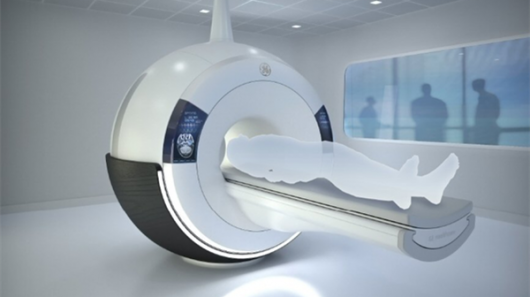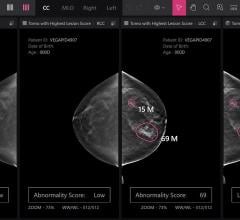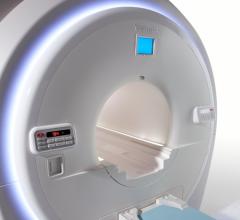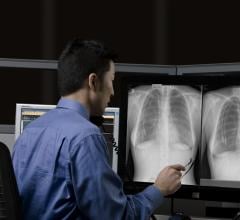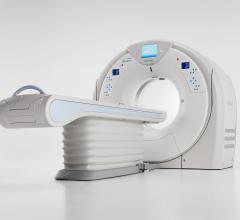A shorter course of androgen suppression therapy prior to radiation therapy, when compared to a longer course of androgen suppression therapy, yields favorable outcomes and fewer adverse effects for intermediate-risk prostate cancer patients, according to research presented at the American Society for Radiation Oncology’s (ASTRO) 55th Annual Meeting. The study confirmed a disease-specific-survival (DSS) rate of 95 percent when patients received fewer weeks of neoadjuvant (NEO) total androgen suppression (TAS).
GE Healthcare reported that Silent Scan, a revolutionary technology that dramatically quiets magnetic resonance imaging (MRI) exams, is now commercially available and growing in clinical adoption around the world. Silent Scan addresses one of the most significant impediments to patient comfort — excessive acoustic noise generated during an MRI scan. Conventional MRI scanners can generate noise in excess of 110 decibels, roughly equivalent to rock concerts and requiring ear protection. GE’s exclusive Silent Scan technology is designed to reduce MR scanner noise to ambient (background) sound levels and improve a patient’s MRI exam experience.
When treated with stereotactic radiosurgery (SRS), that is not combined with whole brain radiotherapy (WBRT), adult brain cancer patients who were 50 years old and younger were found to have improved survival, according to research presented at the American Society for Radiation Oncology’s (ASTRO’s) 55th Annual Meeting. Younger patients (under 50 years old) were also found to be at no greater risk of new brain metastases developing despite omission of WBRT.
Radiology departments have many different needs and face a wide variety of challenges that can impact their departments ...
Cancer patients receiving radiotherapy (RT) who are potentially suffering from depression can be effectively identified by a two-item questionnaire, according to research presented at the American Society for Radiation Oncology’s (ASTRO’s) 55th Annual Meeting.
Varian Medical Systems and Siemens Healthcare showcased a variety of solutions that bring together Siemens' world-class diagnostic imaging technologies with Varian's advanced therapeutic systems for treating cancer with image-guided radiotherapy, radiosurgery, and brachytherapy at the 54th annual meeting of the American Society for Radiation Oncology (ASTRO).
Nucletron, an Elekta company has launched Esteya, a new approach for treating patients with skin cancer.
Despite decades of progress in breast imaging, one challenge continues to test even the most skilled radiologists ...
Elekta has introduced Monaco 5.0, which consolidates support for clinically useful delivery techniques in a single treatment planning system, and features refinements to planning speed and precision.
This August marked the 10th anniversary of the first production use of TeraMedica’s Evercore vendor neutral archive software.
Toshiba’s Vantage Titan 3.0T offers true comfort and flexibility with the power of 3.0T. The system is very quiet and features a large bore to put patients at ease. It also overcomes the clinical limitations of traditional 3.0T with advanced multi-port RF transmission technology, providing more uniformity and coverage to produce better body images.
Bayer Radiology’s Barbara Ruhland and Thom Kinst discuss how radiology departments can address the many different ...
In an independent study presented during the North American Spine Society (NASS) Annual Meeting in October 2012, GE Healthcare’s OEC Elite 9900 mobile C-arm was rated the best in image quality and dose management.
Downey Breast Clinic recently selected PowerServer RIS/PACS/MU to manage their imaging center’s workflow and to gather the necessary data to attest for meaningful use.
Proton therapy, an external beam radiotherapy in which protons deliver precise radiation doses to a tumor and spare healthy organs and tissues, is cost-effective in treating medulloblastomas, fast-growing brain tumors that mainly affect children, when compared to standard photon radiation therapy, according to research presented today at the American Society for Radiation Oncology’s (ASTRO’s) 55th Annual Meeting.
eHealth Saskatchewan plays a vital role in providing IT services to patients, health care providers, and partners such ...
The American Society for Radiation Oncology (ASTRO) highlighted the recently published Adjuvant and Salvage Radiotherapy After Prostatectomy: ASTRO/AUA Guideline during ASTRO’s 55th Annual Meeting, September 22-25, 2013, in Atlanta.
Healthcare providers looking for a versatile, scalable and patient-friendly computed tomography (CT) system now have a solution with the launch of Toshiba’s new Aquilion Prime. The system’s technologies deliver on customers’ clinical and financial needs of today and tomorrow.
TeraRecon announced positive ratings in the recently released KLAS 2013 Advanced Visualization performance report entitled “Advanced Visualization 2013: How Advanced Is It?” TeraRecon’s general performance ratings were particularly noteworthy, in that the company received the top scores for the following general indicators:
Agfa HealthCare announced the North American launch of the CR 12-X, a table-top computed radiography (CR) digitizer which combines affordability with high image quality. This solution is fitting for general radiography, orthopaedic, and chiropractic practices, including those needing Full Leg/Full Spine application.
When public health budgets are constrained, mammography screening should begin later and occur less frequently, a cost-effectiveness analysis for California’s Every Woman Counts (EWC) program concludes.
The New York Proton Center (NYPC), a consortium of five leading hospitals in New York City, including Continuum Health Partners, Memorial Sloan-Kettering Cancer Center, Montefiore Medical Center, the Mount Sinai Medical Center, and New York University Langone Medical Center, announced an agreement with ProCure Proton Therapy Center in Somerset, N.J., CentraState Health Care System, Princeton Radiation Oncology and management services for NYPC being provided by 21st Century Oncology, a national provider of advanced radiation oncology services. This agreement will give the consortium’s patients access to a state-of-the-art proton treatment center in Somerset, N.J., one of only twelve such centers in the nation and the only center in the New York and New Jersey region. Proton therapy is a unique form of precision radiation that directly attacks tumors while minimizing potentially damaging radiation to surrounding healthy tissues and organs.
Researchers at Penn State College of Medicine and Penn State Milton S. Hershey Medical Center (Hershey, Pa.) have categorized the appearance and evolution of abnormalities on neuroimages that represent abusive head trauma (AHT) in infants. The researchers' descriptions of these abnormalities are important for narrowing down the timing of AHT, which can aid police in identifying and excluding potential perpetrators. Appearances of a variety of abusive traumatic injuries on cranial CT scans and MRIs at different time points are described and discussed in "Serial neuroimaging in infants with abusive head trauma: timing abusive injuries. Clinical article," by Ray Bradford, M.D., Arabinda K. Choudhary, M.D., M.R.C.P., F.R.C.R, and Mark S. Dias, M.D., published online, ahead of print, in the Journal of Neurosurgery: Pediatrics. This study is the largest one on timing of AHT to date, and its findings confirm and extend those of a previous, smaller study conducted by the senior author, Mark S. Dias, M.D. The researchers hope that this article will serve as an important reference for professionals called upon to provide a time frame for abusive head injuries.
To improve healthcare providers’ diagnostic confidence, Toshiba is showcasing enhancements to its Kalare radiographic/fluoroscopy (R/F) digital X-ray system.

 September 24, 2013
September 24, 2013 
